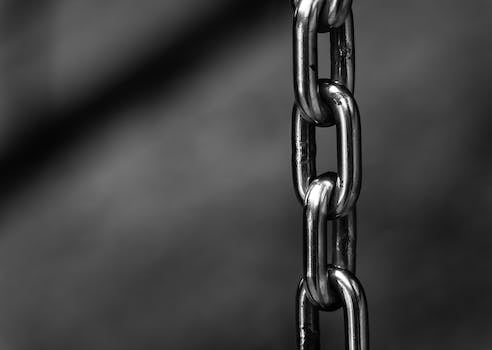

-
Table of Contents
Unveiling the Secrets: Surprising Toothpaste Tube Trivia
Introduction
The toothpaste tube is a common household item that we use every day without giving it much thought. However, you may be surprised to learn that this seemingly ordinary tube holds some interesting information that you may not be aware of. In this article, we will explore some surprising facts about your toothpaste tube that you may find intriguing.
The Hidden Ingredients in Your Toothpaste: Unveiling the Surprising Components
Toothpaste is a staple in most people's daily oral hygiene routine. We squeeze it onto our toothbrushes, scrub away at our teeth, and rinse it out, never giving much thought to what exactly is in that tube. But have you ever stopped to wonder what hidden ingredients are lurking in your toothpaste? You might be surprised to learn that there is more to toothpaste than just minty freshness.
One of the most common ingredients found in toothpaste is fluoride. This mineral has long been praised for its ability to prevent tooth decay and strengthen enamel. Fluoride works by remineralizing the teeth, making them more resistant to acid attacks from bacteria and sugars. It is a key component in preventing cavities and maintaining good oral health. However, it is important to note that excessive fluoride intake can lead to dental fluorosis, a condition that causes white spots or streaks on the teeth.
Another surprising ingredient found in toothpaste is triclosan. This antibacterial agent is added to toothpaste to help fight gum disease and prevent plaque buildup. Triclosan has been shown to be effective in reducing gingivitis and improving overall oral health. However, there is some concern about the potential for triclosan to contribute to antibiotic resistance and disrupt hormone function. The FDA has banned the use of triclosan in certain products, but it is still allowed in toothpaste at low concentrations.
Sodium lauryl sulfate (SLS) is another common ingredient found in toothpaste. This surfactant is responsible for the foaming action that helps to distribute the toothpaste evenly in the mouth. SLS also helps to remove debris and stains from the teeth, leaving them feeling clean and fresh. However, some people may be sensitive to SLS and experience irritation or dryness in the mouth. If you have a history of mouth ulcers or canker sores, you may want to consider using a toothpaste without SLS.
One ingredient that may surprise you is microbeads. These tiny plastic particles are added to some toothpaste brands to provide a gentle abrasive action for removing stains and plaque. However, microbeads have come under scrutiny in recent years due to their negative impact on the environment. These tiny particles can end up in our waterways, where they can be ingested by marine life and contribute to pollution. Many toothpaste manufacturers have phased out the use of microbeads in response to these concerns.
Finally, let's not forget about the flavorings and sweeteners that give toothpaste its pleasant taste. Most toothpaste contains artificial sweeteners like saccharin or sorbitol to make brushing more enjoyable. These sweeteners are low in calories and do not contribute to tooth decay. Additionally, toothpaste often contains flavorings like spearmint or peppermint to give it that refreshing taste. These flavorings are carefully selected to provide a pleasant sensory experience while brushing.
In conclusion, the toothpaste tube holds more than just a minty fresh paste. It contains a variety of ingredients that work together to promote good oral health. From fluoride to triclosan, SLS to microbeads, each ingredient serves a specific purpose in keeping our teeth clean and healthy. So the next time you squeeze that toothpaste onto your brush, take a moment to appreciate the science behind it and the surprising components that make up your toothpaste.
The Manufacturing Process of Toothpaste Tubes: What You Didn't Know

Toothpaste is a staple in most households, used daily to maintain oral hygiene. We squeeze it onto our toothbrushes without giving much thought to the tube it comes in. However, the manufacturing process of toothpaste tubes is a fascinating and intricate one that holds some surprising information.
The first step in the manufacturing process is the creation of the tube itself. Toothpaste tubes are typically made from a type of plastic called high-density polyethylene (HDPE). This material is chosen for its durability and ability to withstand the pressure of squeezing. HDPE is also resistant to chemicals, ensuring that the toothpaste inside remains fresh and uncontaminated.
Once the HDPE is obtained, it is melted down and extruded into a long, thin tube shape. This process involves forcing the molten plastic through a die, which gives it its final shape. The tube is then cooled and cut into the desired length. It is interesting to note that toothpaste tubes are often made in large rolls, with multiple tubes attached to each other. This allows for efficient production and packaging.
After the tubes are formed, they go through a printing process. This is where the familiar labels and branding are added. The printing is typically done using a technique called flexography, which involves transferring ink from a flexible plate onto the tube. This method allows for high-quality and detailed printing, ensuring that the branding is clear and attractive to consumers.
Once the tubes are printed, they move on to the next stage of the manufacturing process: sealing. The open end of the tube is folded and sealed using heat. This ensures that the toothpaste remains securely inside and prevents any leakage. The sealing process is crucial in maintaining the integrity of the product and ensuring that it reaches the consumer in perfect condition.
Another surprising aspect of toothpaste tube manufacturing is the inclusion of a small metal ring at the opening of the tube. This ring, known as a crimp, serves multiple purposes. Firstly, it provides additional support to the sealed end of the tube, preventing any accidental opening or damage during transportation. Secondly, it acts as a barrier, preventing air and moisture from entering the tube and affecting the quality of the toothpaste.
The final step in the manufacturing process is the filling of the tubes with toothpaste. This is done using specialized machinery that accurately measures and dispenses the desired amount of toothpaste into each tube. The filled tubes are then capped, completing the manufacturing process.
In conclusion, the manufacturing process of toothpaste tubes is a complex and fascinating one. From the creation of the tube itself to the printing, sealing, and filling stages, each step is carefully executed to ensure the production of high-quality and reliable toothpaste tubes. The inclusion of a metal crimp and the use of HDPE plastic further enhance the functionality and durability of these tubes. Next time you squeeze toothpaste onto your toothbrush, take a moment to appreciate the intricate process that brought it to you.
Toothpaste Tube Recycling: Surprising Facts and Environmental Impact
Toothpaste is a staple in most households, used daily to maintain oral hygiene. But have you ever stopped to think about what happens to the toothpaste tube once it's empty? Many people simply toss it in the trash without a second thought. However, there is surprising information about toothpaste tube recycling that you may not be aware of.
Firstly, it's important to understand the environmental impact of toothpaste tubes. Most toothpaste tubes are made from a combination of plastic and aluminum, which makes them difficult to recycle. In fact, many recycling facilities are not equipped to handle this type of packaging. As a result, millions of toothpaste tubes end up in landfills each year, contributing to the growing problem of plastic waste.
But here's the surprising part: toothpaste tubes can actually be recycled! While it may not be as straightforward as recycling a plastic water bottle, there are options available. Some companies have started to develop innovative solutions for recycling toothpaste tubes. For example, a few brands have introduced a program where consumers can send back their empty tubes to be recycled. These companies have partnered with recycling facilities that specialize in processing this type of packaging, ensuring that the tubes are properly recycled and diverted from landfills.
Another surprising fact about toothpaste tube recycling is that some tubes are made from sustainable materials. In recent years, there has been a push towards more eco-friendly packaging in the oral care industry. As a result, some toothpaste tubes are now being made from materials like plant-based plastics or biodegradable materials. These tubes can be recycled just like traditional plastic tubes, but they also have the added benefit of being more environmentally friendly from the start.
Additionally, toothpaste tube recycling is not just limited to the tube itself. The caps and pumps that come with toothpaste tubes can also be recycled. These small plastic components often go unnoticed, but they can add up to a significant amount of waste if not properly disposed of. By recycling the entire toothpaste packaging, you can further reduce your environmental impact and contribute to a more sustainable future.
So, what can you do to make a difference? Firstly, check if the toothpaste brand you use offers a recycling program. If they do, take advantage of it and send back your empty tubes for recycling. If not, consider switching to a brand that prioritizes sustainability and offers eco-friendly packaging options. Additionally, make sure to recycle the caps and pumps that come with your toothpaste tubes. These small actions may seem insignificant, but they can have a big impact when multiplied by millions of consumers.
In conclusion, toothpaste tube recycling is an important issue that deserves more attention. The surprising fact that toothpaste tubes can be recycled, along with the availability of sustainable packaging options, highlights the potential for positive change in the oral care industry. By being mindful of our toothpaste tube disposal habits and supporting brands that prioritize sustainability, we can all contribute to a cleaner and greener future. So, the next time you finish a tube of toothpaste, remember that it doesn't have to end up in a landfill – it can be recycled and given a new life.
Q&A
1. What surprising information does your toothpaste tube hold?
The bottom of the toothpaste tube often has a colored bar that indicates the composition of the toothpaste.
2. Why is this information surprising?
Many people are unaware that the colored bar on the toothpaste tube provides information about the toothpaste's ingredients.
3. How can this information be useful?
Knowing the composition of your toothpaste can help you make informed decisions about your oral health and choose the right toothpaste for your specific needs.
Conclusion
In conclusion, toothpaste tubes hold surprising information that many people may not be aware of. These tubes often have a colored bar or square at the bottom, which indicates the type of ingredients used in the toothpaste. Additionally, the number on the tube represents the expiration date or the manufacturing batch code. Understanding these markings can help consumers make informed choices about their oral care products.












